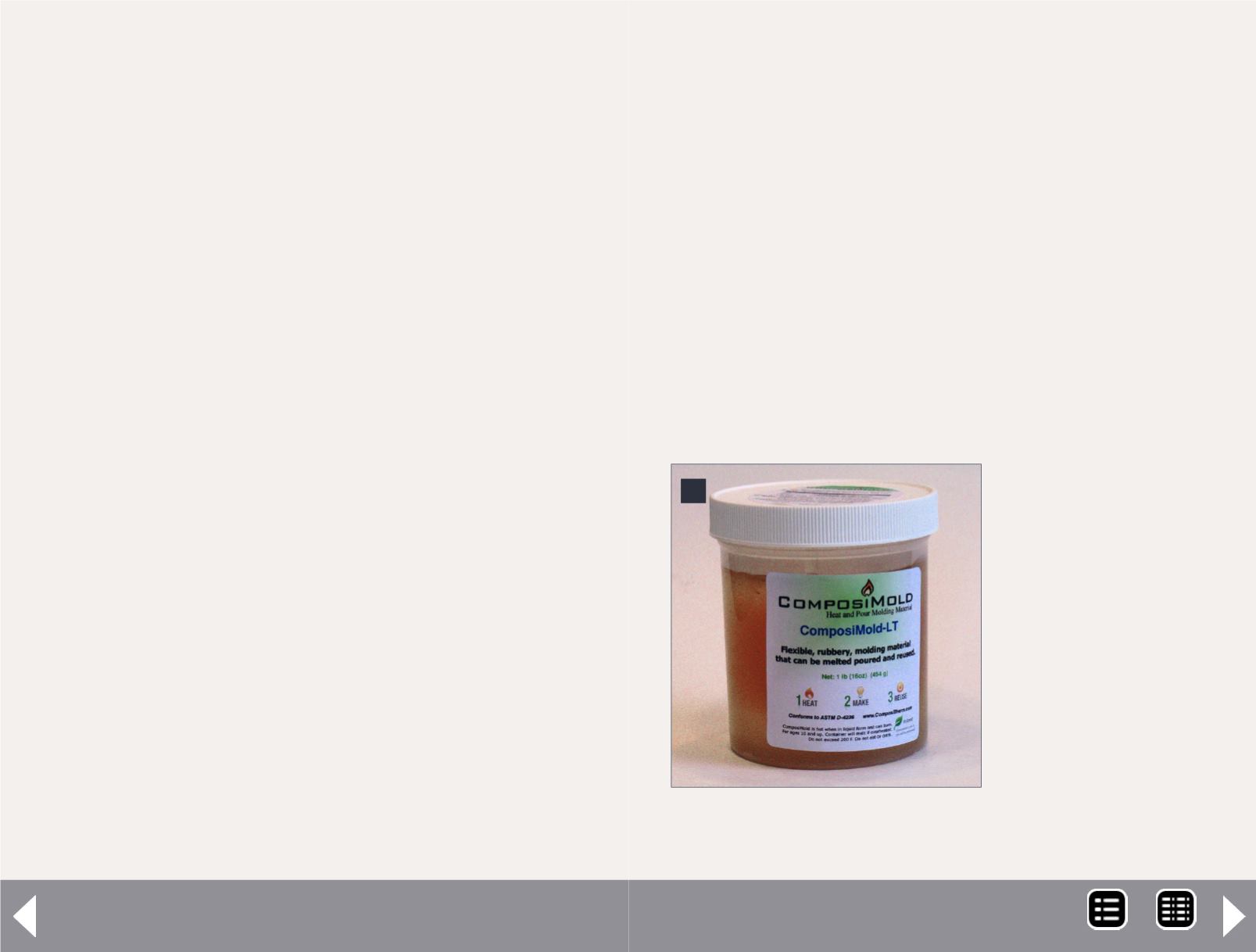
cure, removing the master, and then casting a duplicate part in
the cavity that remains.
Mold-making rubber is not inexpensive and has a limited shelf
life, usually less than six months. The mold that it produces is
permanent and can only reproduce the part for which it was
constructed. This is all well and good if you need to make a sig-
nificant number of the same parts. But what if you only need
an occasional casting or two? Is there a process that can make
a mold quickly, one that can be reused when the mold is no
longer needed?
Yes, there is. The product is called ComposiMold. It is a thermal
polymer that can be readily melted in a microwave or double
boiler, and poured around a master to produce a mold. When
all of the castings have been made, the ComposiMold material
can be reheated and returned to its jar or used to create another
mold. This cycle can be repeated many, many times.
In addition, ComposiMold does not smell (in fact, it has a
pleasant odor when melted), is non-toxic, and cleans up with
water. The process of mold-making can be completed in about
an hour. You can cast plaster, concrete, resin, silicone, ure-
thane, epoxy, wax, soap, and even chocolate in ComposiMold.
ComposiMold's only drawback is that it is somewhat soft and
you will only be able to produce a few castings from the mold
before it is no longer usable. If you still have the master, you
can always remelt the ComposiMold to make a fresh mold and
carry on.
Trial size
ComposiMold is available in 6, 16, and 32 ounce jars (1).
Because ComposiMold is measured in fluid ounces rather than
by weight, you can sometimes measure the volume needed
to cover your master using water as a surrogate (thank you
Archimedes!) and buy only the amount of ComposiMold that
you will need. The 6 ounce jar is intended to allow you to try
ComposiMold and is enough to cast items using a paper cup as
a mold box, as we will see.
To make a mold, in addition to the ComposiMold you will need
a few Popsicle sticks, some toothpicks, suitable mold boxes,
mold release, and access to a microwave oven. The mold box
holds the master while you pour the mold-making material
around it.
Conventional silicone or urethane rubber processes can
use loose-fitting mold boxes made of wood with unsealed
joints because the rubber is too thick to leak out. Because
ComposiMold is a liquid, the mold box used with it must be
watertight. Paper cups are ideal for casting smaller detail
parts, and baking pans (regular or disposable) are better for
larger items. While
ComposiMold is non-
toxic and cleans up
readily with water, it's
probably a good idea to
buy some baking pans
from the dollar store
rather than use the
household bake ware
– you'll have fewer “dis-
cussions” that way.
Mold release can be any-
thing from petroleum
jelly, talcum powder
(although this leaves a
powder to deal with),
lotions, cooking spray,
1
1. ComposiMold comes in a
variety of sizes.
Easiest way to make molds - 2
MRH-Jan 2014


